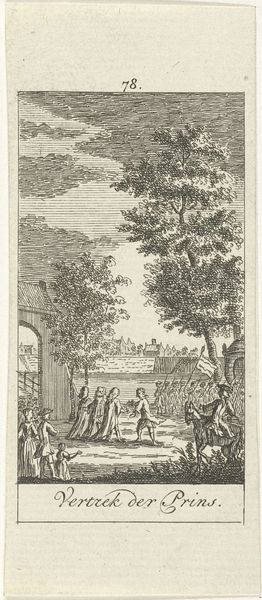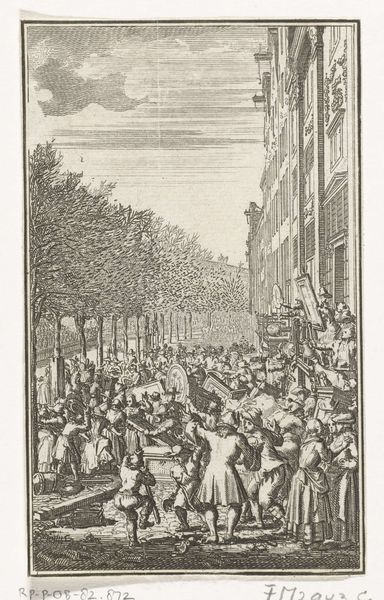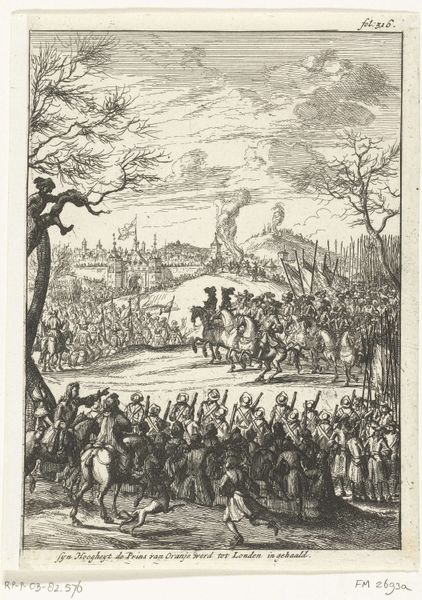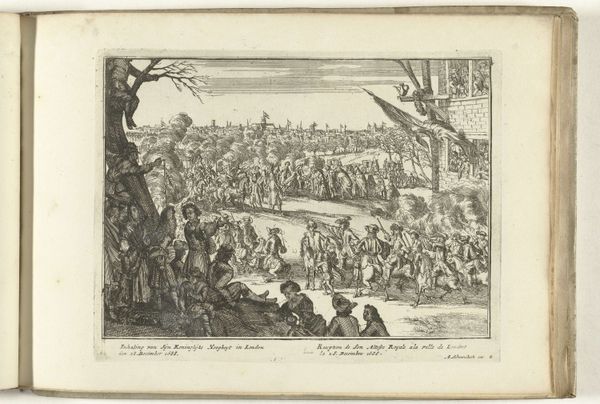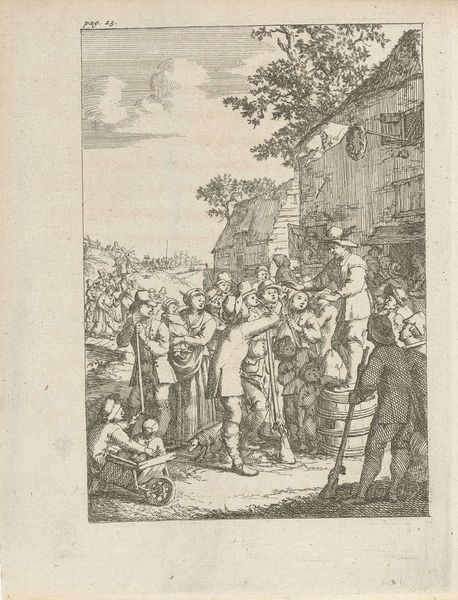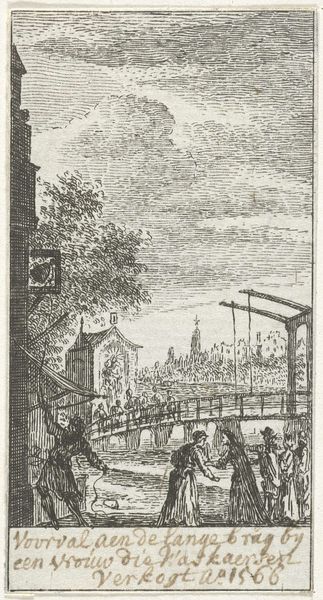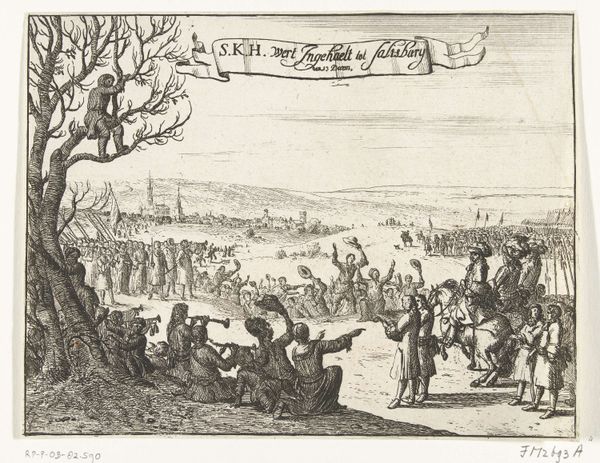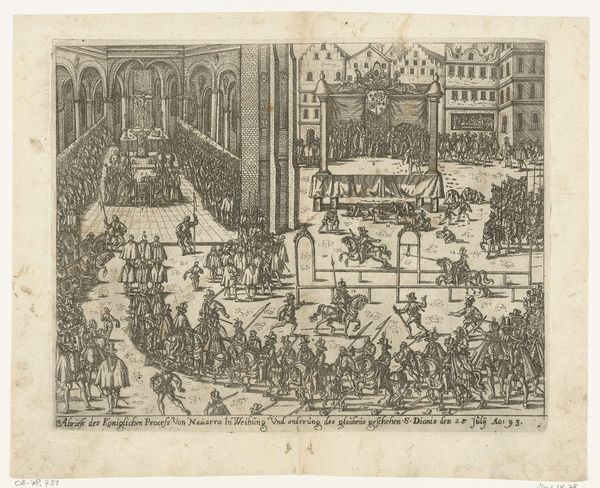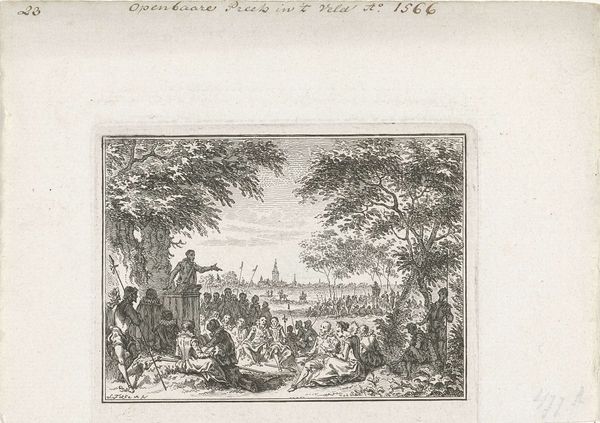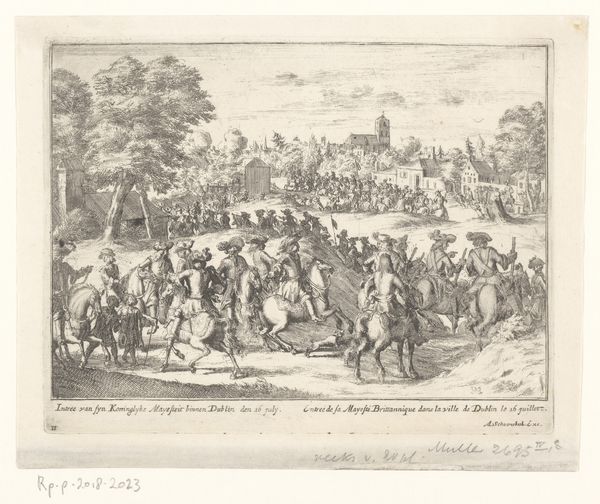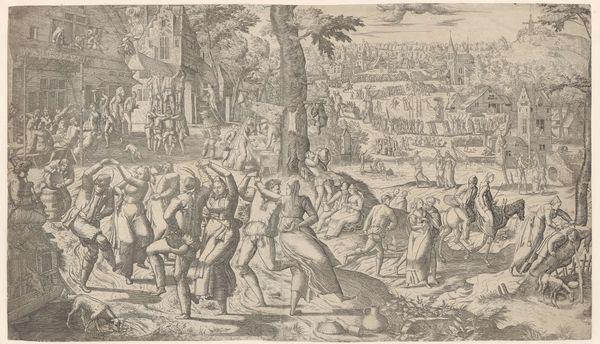
Feestmaal bij de begrafenis van Gerrit Dirksz. den Uyl, herbergier te Sloten, 1680 1680
0:00
0:00
print, etching
#
narrative-art
#
dutch-golden-age
# print
#
etching
#
landscape
#
genre-painting
Dimensions: height 126 mm, width 77 mm
Copyright: Rijks Museum: Open Domain
Curator: This etching from 1680 is titled “Feestmaal bij de begrafenis van Gerrit Dirksz. den Uyl, herbergier te Sloten.” It depicts a feast at the funeral of Gerrit Dirksz. den Uyl, a tavern owner in Sloten. Editor: My first thought? It looks like quite the raucous send-off! The detail in this piece is impressive, particularly considering its size. What immediately strikes me are all the bodies - so many bodies relaxing, sitting on the ground, eating, drinking! The scale of labor and supplies needed for the scene must have been gigantic. Curator: It does offer us a fascinating glimpse into 17th-century Dutch burial customs. This wasn’t just a somber occasion; it was a public event, a social spectacle practically. Look at the sheer number of people participating, as though this public display of mourning provided social value in some way. Editor: Absolutely. And what a contrast between the fine lines detailing the people feasting and the heavy forms of the barrels and food stores on the ground. The engraving process itself would have required significant resources and skill, pointing to the deceased’s standing in the community. Etchings like these helped standardize imagery and were cheap to produce for a relatively large audience, creating a popular collective memory. Curator: Yes, and that’s important! The act of commissioning an etching transforms a personal loss into something public and, arguably, helps cement social bonds. Note how the procession snakes its way from the church and leads directly into the feast. The church has seemingly blessed what could be seen by some as excessive material consumption after someone passes on. Editor: I also can't help but notice the swan hanging above the party! Is that part of a decorative scene or an actual tavern ad? Regardless, it does create an interesting contrast. The viewer can draw immediate conclusions about the type of food and work the community valued back in 1680, and that says a lot about this era and society. Curator: Precisely. It encapsulates a very specific cultural moment, highlighting how funerals were significant displays of community and status. The image then provides a snapshot into an economy focused on local commerce, community connection, and public performance. Editor: A poignant reminder that even in death, the material realities of life – labor, production, consumption – continue to shape our rituals and memories. I appreciate the perspective this artwork can give us on the past and its possible parallels to modern day mourning practices.
Comments
No comments
Be the first to comment and join the conversation on the ultimate creative platform.
